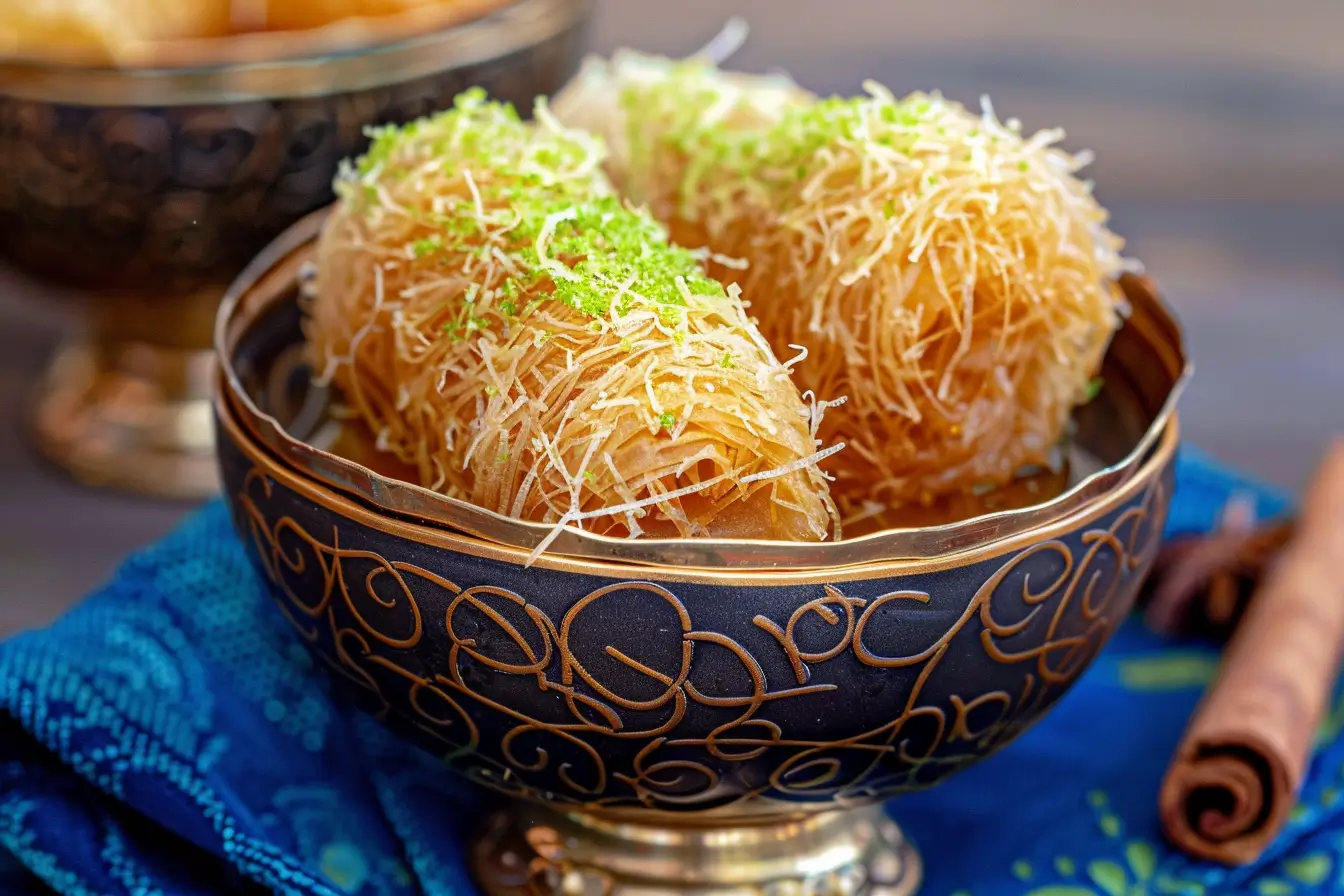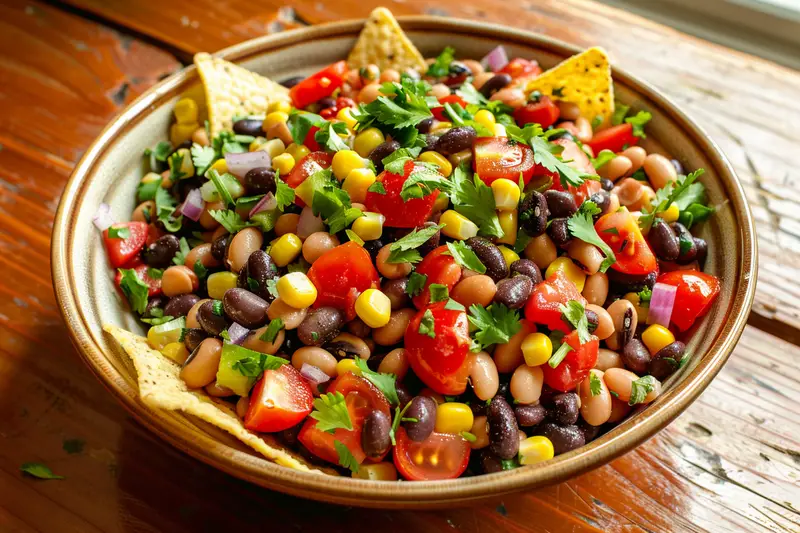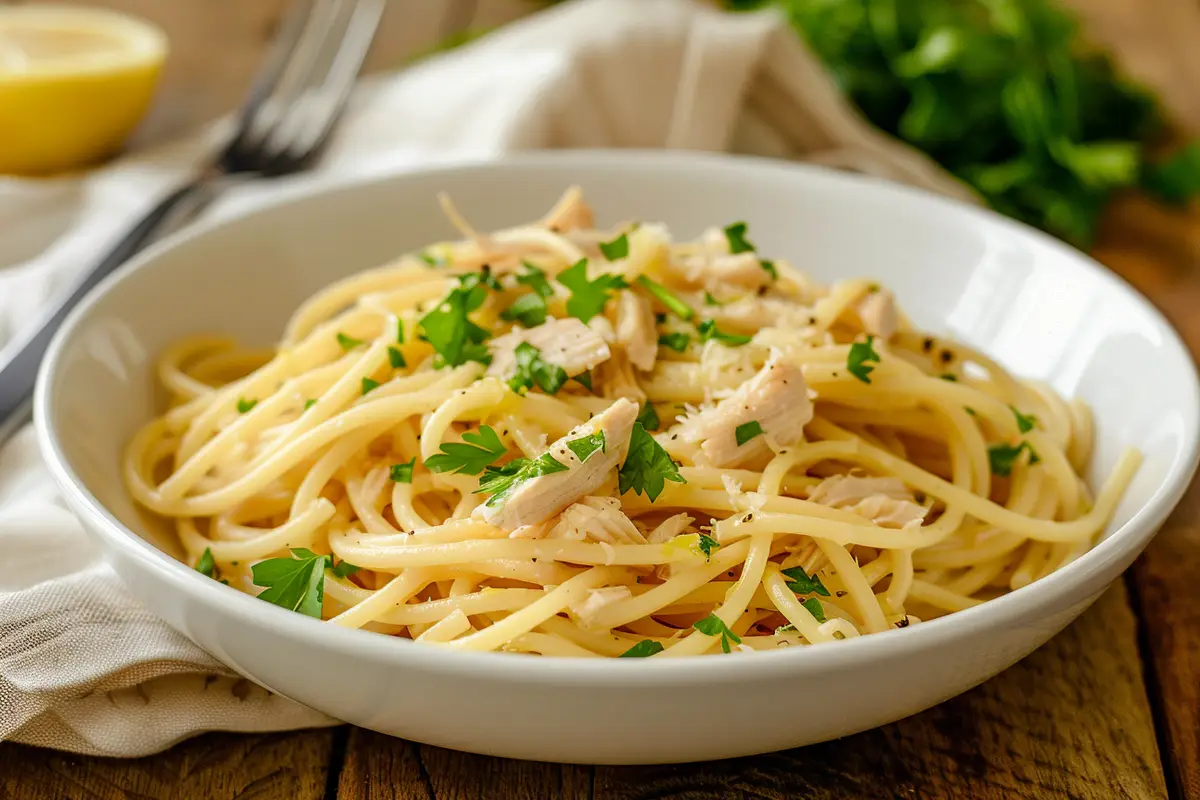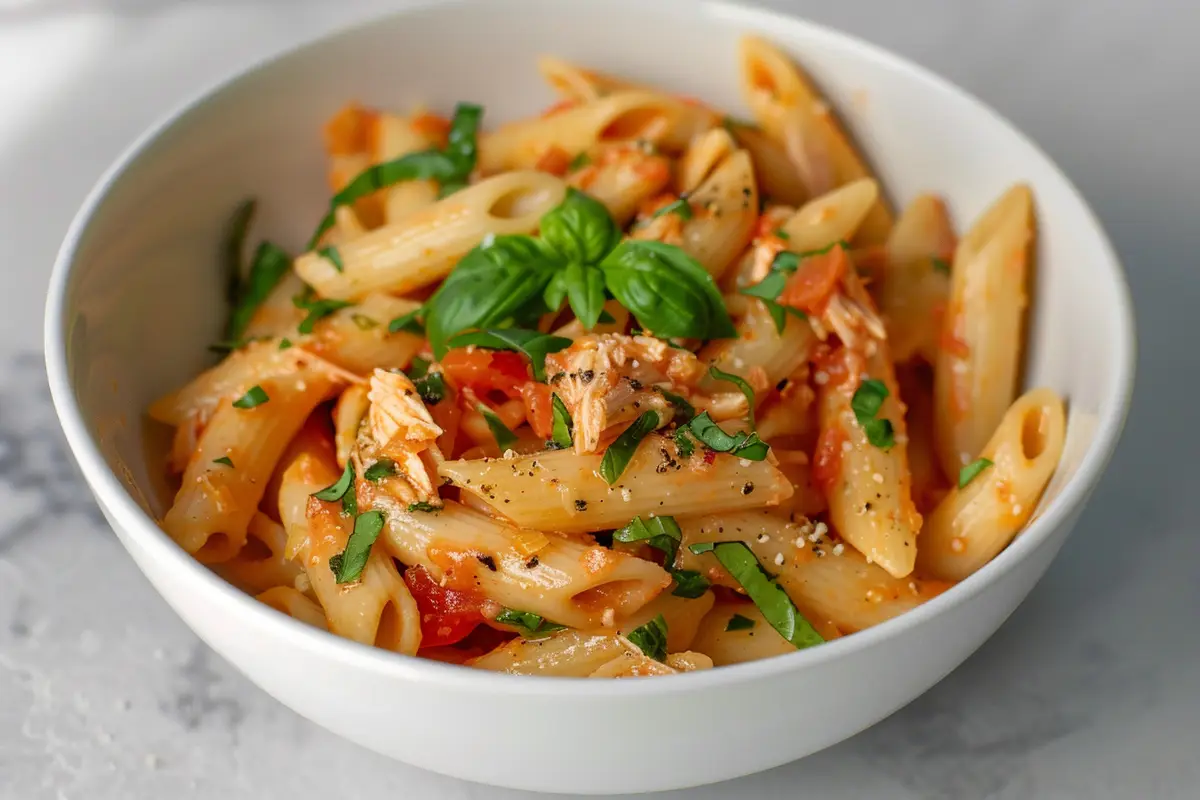Kataifi pastry, also known as shredded phyllo dough, is a versatile ingredient used in many Middle Eastern and Mediterranean desserts. It has a distinctive fine, thread-like texture that crisps up beautifully when baked, making it perfect for sweet treats like baklava and kunafa. If you’ve ever wanted to make kataifi pastry from scratch, this guide will walk you through the process step by step. Whether you’re a home cook looking for a new challenge or a seasoned baker perfecting your technique, this article is packed with tips, tricks, and expert advice to help you master this unique pastry.
Kataifi Pastry: What Is It ?
Kataifi pastry is a type of shredded fillo dough commonly used in Middle Eastern and Greek desserts. Unlike phyllo dough, which comes in thin sheets, kataifi is made up of fine strands that resemble vermicelli noodles. These delicate strands are used to wrap around fillings like nuts, cheese, or even chocolate, creating a crispy, golden-brown pastry that is both light and crunchy.
- Also known as shredded phyllo dough, kataifi is often used in desserts such as bird nest baklava and cheese kunafa.
- It has a unique texture that allows it to absorb syrup while staying crispy on the outside.
- The pastry is made by drizzling a light batter in thin strands onto a hot pan, creating delicate threads of dough.
What Goes Into Kataifi Pastry? (Ingredient List)
To make kataifi pastry from scratch, you need just a few simple ingredients:
- All-purpose flour – This forms the base of the batter.
- Cornstarch – Helps create a light and crispy texture.
- Water and whisk until smooth – Ensures the batter is lump-free.
- Olive oil or vegetable oil – Helps prevent sticking.
You can also add clove or cardamom for a hint of warm spice.
How to Make Kataifi Pastry from Scratch
1. Preparing the Batter
Before you can shred the dough into fine strands, you need to create the right consistency for the batter.
- In a medium-sized bowl, whisk flour, cornstarch, and water until smooth.
- Strain the batter to remove any lumps.
- Let the mixture rest for 15 minutes to allow the flour to hydrate properly.
2. How to Shred the Dough Properly
The key to making perfect kataifi pastry is achieving fine strands of dough. This step requires precision and patience.
- Heat a non-stick pan over medium heat.
- Pour the batter into a piping bag with a small hole cut at the tip.
- Starting from the center of the pan, drizzle the batter in a circular motion instead of straight lines.
- Once the strands set, gently pick them up with a spatula and transfer them to a tray to cool.
Pro Tips for Making Kataifi Pastry at Home
If you want to make kataifi pastry like a pro, follow these tips:
✅ Use a fine sieve to ensure the batter is lump-free.
✅ Make the strands as thin as possible for a delicate texture.
✅ Cover the bowl with a damp cloth to prevent the batter from drying out.
✅ Gently squeeze the piping bag to create even strands.
✅ Process until all the batter is used up to avoid waste.
How to Store and Freeze Kataifi Pastry
Kataifi pastry can be stored for later use, making it a convenient ingredient for desserts.
- Freeze kataifi pastry in an airtight container for up to 3 months.
- If using fresh, cover the dough with plastic wrap to prevent it from drying out.
- When ready to use, let it come to room temperature before baking.
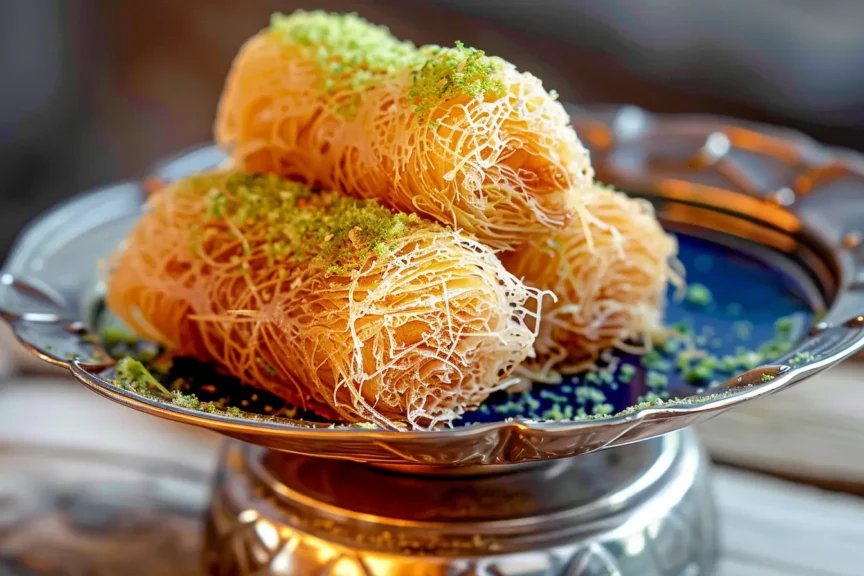
Substitution Options for Kataifi Pastry
If you can’t find kataifi pastry, you can try these substitutes:
- Phyllo sheets of dough, cut into thin strips.
- Shredded dough made from homemade batter.
- Unbaked baklava dough, though the texture will be different.
Popular Desserts Using Kataifi Pastry
Kataifi pastry is used in many Middle Eastern recipes, including:
- Baklava and especially bird nest baklava – A delicious alternative to traditional layered baklava.
- Cheese kunafa – A popular dessert made with kataifi and sweet cheese.
- Dubai chocolate bars – A modern twist using kataifi and chocolate bar fillings.
Mastering Kataifi: Pro Tips, Ingredients & Smart Cooking Techniques
Kataifi is a versatile unique pastry, commonly used in Middle Eastern pastry dishes such as baklava and kunafa. Also referred to as shredded phyllo, its fine, delicate strands create the perfect crispy texture when baked. But achieving that perfect texture requires the right techniques, ingredients, and a few pro tips.
Ingredient Breakdown: What Goes Into Kataifi?
A great kataifi dough starts with a mixture of flour, water, and a few simple add-ins:
- 🛒 What goes into the batter? The key ingredients include flour, cornstarch, and a precise ratio of oil and water and whisk to create the smoothest batter.
- Olive oil would be a great choice, though vegetable works well too for a lighter taste.
- For extra flavor, you can add half a teaspoon of cinnamon sticks or other spices.
Pro Tips for Making Perfect Kataifi
If you want strands of kataifi that are light and crisp, follow these pro tips:
- Use a large flat pan for even heat distribution when cooking the batter.
- When piping the batter, start from the center and move toward the edge of the pan to create consistent strands.
- If the pastry is brown too quickly, adjust the heat—it might be high and needs lowering.
If you’ve tried the recipe and loved it, please leave a comment! Your feedback helps improve future recipes.
Purchasing Kataifi vs. Making It at Home
If you’re purchasing kataifi from a store, ensure it’s fresh and not dried out. But if you can’t make one, homemade kataifi is always a great option and allows for more flexibility in texture and taste.
For those looking for inspiration, like kadayif, kataifi is quite popular in desserts such as including cheese kunafa or layered baklava.
How to Cook Kataifi Like a Pro
- After preparing the batter, spatula and drop it carefully onto the pan in thin streams.
- Make sure the heat isn’t high and needs adjustment for slow, even cooking.
- Allow the dough to set before carefully removing it from the edge of the pan.
For a step-by-step visual guide, check 📖 recipe and 🤷🏻♀️ recipe faqs in the section further down the page.
Final Thoughts: It’s So Good!
If you love kataifi, don’t forget to share your creations! Forget to tag us on TikTok and other social platforms—it helps others discover this delicious pastry.
Looking for more inspiration? Hilda’s Kitchen Blog has some great traditional recipes featuring kataifi. And trust us—once you master it, it’s so good that you’ll want to make it again and again!
This section blends practical pro tips, ingredient insights, and expert techniques for perfect kataifi pastry every time.
Recipe FAQs: Everything You Need to Know About Kataifi Pastry
What is kataifi pastry made of?
Kataifi pastry is made from a simple batter of all-purpose flour, cornstarch, water, and a bit of oil or butter. The batter is piped into fine strands onto a hot surface, creating thin, delicate threads of dough. These strands are then used in various Middle Eastern and Mediterranean desserts, such as baklava and kunafa.
Is kataifi pastry the same as filo pastry?
Not exactly. While both kataifi pastry and filo pastry are used in similar desserts, kataifi is shredded into fine strands, whereas filo comes in thin sheets. They share the same basic ingredients but have different textures and uses. Kataifi is more commonly used for bird nest baklava and kunafa, while filo is often used for layered pastries.
What is kadayıf made of?
Kadayıf, the Turkish name for kataifi, is made of flour, cornstarch, and water, just like kataifi pastry. The main difference is that kadayıf is often used in savory and sweet dishes, such as cheese kunafa or walnut kadayıf desserts.
Is there a substitute for kataifi?
Yes! If you can’t find kataifi pastry, you can use:
Filo dough, finely shredded by hand or with a food processor.
Vermicelli noodles, lightly crushed and softened, though the texture will be different.
Homemade kataifi dough, made by drizzling batter in thin strands onto a pan.
Can I use vermicelli instead of kataifi?
While vermicelli can be used as a substitute for kataifi, it doesn’t provide the same delicate, crispy texture. If using vermicelli, make sure to lightly fry or bake it to get a similar crunch. However, for traditional desserts like kunafa or baklava, kataifi pastry is the best choice.
Can you make kataifi from filo?
Yes! If you can’t find kataifi pastry, you can cut filo sheets into very thin strips to create a similar effect. However, this method won’t give you the same light and airy strands as traditional kataifi. Shredded filo dough works well for certain recipes but may require extra butter or oil to achieve the right texture.
Final Thoughts: Key Takeaways
- Kataifi pastry is a unique pastry known for its fine strands and crispy texture.
- You can learn how to make kataifi using a simple batter and a non-stick pan.
- Strain the batter for a smooth texture and gently squeeze the piping bag to create thin strands.
- Store fresh kataifi by covering the bowl or freeze kataifi for later use.
- Love this recipe? Don’t forget to share it on Pinterest and stay in touch for more delicious ideas!
This comprehensive guide gives you everything you need to make kataifi pastry from scratch. Whether you’re using it for baklava, cheese kunafa, or even Dubai chocolate, this delicate pastry will add a touch of Middle Eastern elegance to your desserts!
Final Thoughts: Mastering Kataifi Pastry at Home
Making kataifi pastry from scratch may seem challenging, but with the right technique, you can create perfectly shredded phyllo dough for your favorite Middle Eastern desserts. Whether you’re making bird nest baklava, kunafa, or experimenting with new creations, this delicate pastry adds a unique crispy texture that enhances every dish.
For more delicious dessert ideas, check out:
- Discover great ideas visite our Sweet Sensations
- Check out this must-try treat: Viral Pistachio Chocolate Bar.
Master the art of kataifi pastry, and elevate your baking with these crispy, golden strands of deliciousness!
Print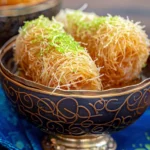
Kataifi Pastry: How to Make Kataifi Pastry: A Complete Guide to This Unique Middle Eastern Delight
- Total Time: 25 minutes
- Yield: 3 cups of shredded kataifi pastry 1x
Description
Kataifi pastry, also known as shredded phyllo dough, is a delicate and versatile ingredient used in many Middle Eastern and Mediterranean desserts. Its fine, thread-like strands crisp up beautifully when baked, making it perfect for treats like baklava, kunafa, and bird nest pastries. This homemade kataifi recipe is simple and requires just a few ingredients, allowing you to create fresh, high-quality pastry from scratch. Follow this step-by-step guide to master the art of making kataifi at home!
Ingredients
- 2 cups all-purpose flour
- 2 tablespoons cornstarch
- 1 ½ cups water
- 1 teaspoon olive oil or vegetable oil
- Optional: ¼ teaspoon ground cardamom or clove (for extra flavor)
Instructions
Step 1: Prepare the Batter
- In a medium bowl, whisk together the all-purpose flour, cornstarch, and water until the mixture is smooth.
- Strain the batter through a fine sieve to remove any lumps.
- Let the batter rest for 15 minutes to ensure proper hydration.
Step 2: Shred the Dough
- Heat a non-stick pan over medium heat.
- Pour the batter into a piping bag with a small hole cut at the tip.
- Hold the piping bag over the pan and drizzle the batter in thin, circular motions to create fine strands.
- Allow the strands to cook for about 10-15 seconds until they set but remain soft.
- Gently lift the strands with a spatula and transfer them to a tray to cool.
Step 3: Store or Use the Kataifi Pastry
- Use the fresh kataifi pastry immediately in your favorite dessert recipes.
- To store, cover it with plastic wrap to prevent drying.
- For long-term storage, freeze in an airtight container for up to 3 months.
- Prep Time: 20 minutes
- Cook Time: 5 minutes per batch
- Category: Pastry, Dessert Ingredient
- Method: Stovetop
- Cuisine: Middle Eastern, Mediterranean
Nutrition
- Serving Size: 1/2 cup
- Calories: 120 kcal
- Sugar: 0g
- Sodium: 2mg
- Fat: 1g
- Saturated Fat: 0g
- Unsaturated Fat: 1g
- Trans Fat: 0g
- Carbohydrates: 25g
- Fiber: 1g
- Protein: 3g
- Cholesterol: 0mg
Keywords: kataifi pastry, shredded phyllo dough, Middle Eastern desserts, homemade kataifi, how to make kataifi

